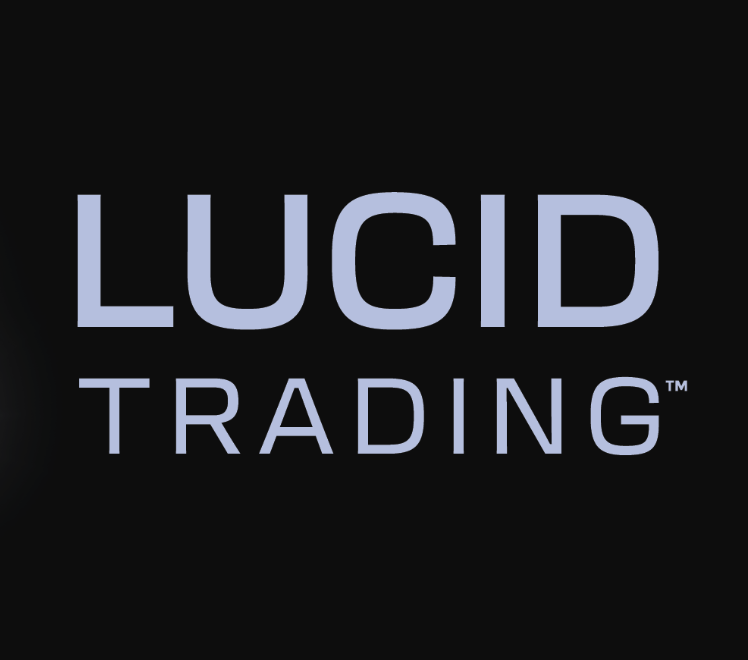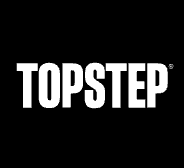Instant Funding vs Evaluation Challenges

Two Paths, One Goal: Get Funded
A few years ago, the idea of getting funded as a retail trader sounded like something reserved for professionals sitting on trading floors in London or New York. Fast forward to now, and it’s one of the most accessible—and talked about—opportunities in trading.
But with all that accessibility came a new dilemma: do you take the “classic” route of evaluation challenges, or skip the line with instant funding?
It’s a question I get asked almost daily. And to be honest, I’ve wrestled with it myself more than once. Because on the surface, instant funding sounds like a no-brainer: pay a fee, get a funded account, start trading. No challenge, no hurdles, no waiting. But of course, it’s never that simple—nothing in trading is.
On the other hand, evaluation challenges—where you have to prove your skills over one or two phases before getting funded—have become the standard. They’re often cheaper, they teach you discipline, and many firms base their entire funding model around them.
So which one is better? Well, like most things in trading: it depends. On your experience, your goals, and how you handle risk when there’s structure—or when there isn’t.
What I want to do in this article is lay out both paths, from someone who's taken each more than once. The upside, the downsides, the unexpected “gotchas,” and when each approach actually makes sense.
Because the goal isn’t just to get funded—it’s to stay funded, scale, and start seeing real payouts.
What Is Instant Funding, and Who’s It For?
The name says it all—instant funding gives you a funded account right away. No evaluation, no challenge, no 10-day demo grind. You sign up, pay the fee, and within a day (sometimes hours), you’re trading live capital under the firm’s conditions.
Sounds good, right?
It can be. But let’s pull back the curtain a little.
How It Works (In Theory… and In Reality)
In theory, you skip the time pressure of hitting a profit target in a set number of days. You don’t need to prove yourself in a demo environment. You just get access to an account and start trading—simple and clean.
In reality, it’s not quite that straightforward. Sure, there’s no evaluation, but that doesn’t mean you’re free to do whatever you want. Instant funding almost always comes with tighter rules:
- Lower daily or total drawdown limits
- Stricter consistency requirements
- Limited instruments or no news trading in some cases
And payouts? Don’t expect to withdraw profits on day one. Many instant funding models require a buffer—a certain profit amount you need to reach before payouts start. So while you're technically trading a “funded” account, you’re still proving yourself… just post-payment.
Who Is Instant Funding Actually For?
This model makes the most sense for experienced traders—those who already know their strategy, manage risk well, and don’t want to burn time on evaluations.
I’ll be honest: when I know I’ve got a strategy dialed in, and I just want to get to work, instant funding is a breath of fresh air. No rules to game, no challenge to pass, just me and the market.
But for newer traders? It can be a very expensive way to discover you’re not ready.
The Traditional Evaluation Model – Why It Still Dominates the Prop Space
While instant funding sounds appealing—and it can be, in the right hands—the reality is that most traders still start with evaluations. And there's a reason for that: structure.
Evaluations are the backbone of modern prop trading. You’re given a set of rules, a profit target, and usually a two-phase process. Pass both phases without violating the drawdown or risk rules, and you’re funded. It’s part challenge, part filter, and part business test.
Why Most Traders Start Here
I get why so many traders choose the evaluation route. It’s cheaper upfront, often half the cost of an instant funding model. And for traders who are still developing their consistency, it offers something that instant models don’t: room to learn.
I know that when I started out, I needed structure. The challenge format—with its limits and milestones—forced me to take trading seriously. It made me rethink my risk, tighten up my edge, and drop a lot of the nonsense I used to justify bad decisions.
Also, the firms offering evaluations are usually more generous once you’re funded. Profit splits improve, drawdown rules often relax, and you’re rewarded for proving you can follow a system.
But It’s Not All Roses
The downside? Evaluation phases come with time pressure, and a lot of traders crumble under that. You’ve got X number of days to hit a profit target, and that can lead to some… questionable decisions.
I’ve seen traders completely blow themselves up on day nine of a ten-day challenge because they were just a few hundred dollars away from passing and decided to go all in. That’s not trading—that’s gambling with a calendar.
Also, the double-phase model some firms use can feel like a bit of a grind. You pass the first phase, feel great, and then—surprise—there’s another one waiting for you. Psychologically, it can wear you down if you’re not prepared.
But here’s the thing: that pressure is also the point. If you can stay consistent under the challenge conditions, you're more likely to survive when it actually matters—when you're funded.
Instant vs Evaluation – The Real Differences That Matter
At the end of the day, both funding models are trying to answer the same question: Can this trader manage risk, stay consistent, and make money?
But how they ask that question—and what they expect in return—looks very different.
“There’s no such thing as free capital. Whether you earn it through a challenge or buy into it directly, you still have to prove you can keep it.”
— Something I learned the hard way, more than once.
Upfront Cost
This is where the difference hits you first.
Instant funding is expensive. You’re often paying two to three times what a challenge would cost, simply because you’re skipping the “proof-of-skill” stage. It’s convenience pricing.
Evaluations, on the other hand, are the cheaper entry point—but that doesn’t mean they’re easier. You’re paying less, but you’re also expected to put in more work to earn the funding.
If you’re low on capital but confident in your process, an evaluation can get you access to serious funds with minimal upfront risk. If you’ve got cash to invest and want to skip the wait, instant might be your lane.
Rules and Trading Freedom
Here’s where many traders get blindsided.
Instant funding often comes with tighter restrictions—smaller daily drawdown, stricter profit targets, and more limitations on trade types, hours, or news events. It’s not always obvious on the landing page, but read the fine print and it shows up quick.
Evaluations might start strict, but once you pass, funded accounts tend to offer more breathing room. Some even remove trailing drawdowns, allow overnight holds, or relax consistency rules.
I always tell traders: don’t just look at how fast you get funded—look at how long you can stay funded under the rules.
Long-Term Potential
This is the real differentiator for me.
If you’re planning to scale up, stack multiple accounts, and build a sustainable income from trading, the evaluation path is usually the better foundation. It teaches you the habits and discipline you’ll need long-term.
Instant funding? It can work, but you have to come in with those habits already built. Otherwise, you’ll burn through capital fast—and those fees sting more when they’re self-inflicted.
Which Type of Trader Benefits Most from Each Path?
This is the part most traders skip over when choosing a funding model—they think in terms of price or speed, but not fit. And let’s be real: what works for one trader might absolutely wreck another.
So, instead of asking "Which one is better?", the smarter question is: "Which one matches the way I actually trade?"
Instant Funding Works Best If…
You already know how to handle your edge.
That means:
- You’ve got a strategy that’s proven over hundreds of trades
- You understand risk deeply, and you’re not chasing setups just to feel “active”
- You’ve passed evaluations before and don’t want to play the game again
In short, you treat trading like a job, not a lottery ticket.
I’ve used instant funding when I had a setup I was confident in, and I didn’t feel like burning a week or two proving myself all over again. I wanted to get in, get trading, and get to the payout phase. And with the right firm, that works.
But I wouldn’t recommend this route if you’re still tweaking your strategy, dealing with emotional swings, or trying to figure out what kind of trader you are. Instant funding amplifies your trading behavior, good or bad.
Evaluation Challenges Are Better If…
You’re still building consistency, or you want the structure of a framework that forces discipline.
Evaluation accounts do two things really well:
- They expose weak risk habits fast
- They give you the real-world pressure of trading with accountability (without risking real capital)
When I started with prop firms, the challenge model actually helped me stay in check. I couldn’t overtrade because the drawdown limit wouldn’t let me. I couldn’t chase entries because I only had so many days to hit the target. That structure made me better.
And there’s another bonus: passing an evaluation gives you confidence—because you’ve earned the account, not just paid for it.
Best Instant Funding Prop Firm Right Now – Why I Recommend Tradeify
There are a lot of firms tossing around the phrase “instant funding” these days—but few actually make it work for serious traders. Tradeify is one of the rare exceptions.
What makes them stand out isn’t just the clean structure and fast access to capital—it’s the fact that they actually give traders real options. You’re not stuck in a one-size-fits-all model. Whether you want instant access or prefer to go the classic route with an evaluation, they offer a setup that fits.
Three Paths to Funding – All Under One Roof
That’s one of the reasons I keep coming back to Tradeify: you can choose what works for your current situation or trading style. They offer:
1. Straight to Sim Funded
If you want to skip the challenge and start trading live capital immediately, this is the path. You pay a one-time fee, get access to the account, and can begin working toward your first payout after just 10 trading days (with consistency rules applied).
Account sizes go from $25K to $150K, with up to 15 mini contracts on the biggest option and drawdown rules based on end-of-day balance, not floating PnL. This gives a lot more breathing room during volatile sessions.
2. Advanced Challenge
This is more of a lean-and-mean challenge format, focused on quick entry with low friction. No daily loss limit, no minimum trading days (just 1), and a relatively low monthly fee.
The trade-off? The drawdown is intraday, which means you really need to be sharp about exits and risk control.
Still, if you're confident and want to pay less to access larger accounts ($50K to $150K), it's a solid option—especially with activation fees refunded after passing.
3. Growth Challenge (My personal favorite)
This is the one I like most, and the one I recommend to a lot of traders—especially those who value a little more flexibility and breathing room.
Why?
- End-of-day drawdown: No pressure to flatten mid-session just because you’re temporarily in drawdown.
- No activation fee after passing—what you pay monthly is all in.
- Reasonable soft daily loss limits and solid contract sizes across all accounts.
For most traders still finding their rhythm or just looking for a little more forgiveness in the rules, this is the sweet spot. The drawdown works with your strategy, not against it.
So yes—Tradeify does offer instant funding. But what really earns my trust is that they offer it alongside two very legit challenge models. You’re not boxed into one approach. Whether you want to take it slow, go fast, or switch it up over time, Tradeify actually lets you do that without jumping to another firm.
My Personal Take – What I Actually Do and Recommend
Alright—real talk.
I’ve traded with multiple prop firms, tested both instant funding and evaluation challenges, and made just about every mistake you can make with both. I've rushed challenges and failed by trying to force setups. I’ve paid for instant funding accounts, only to realize I wasn’t in the right headspace to trade them. And I’ve also had solid months where everything clicked and the payouts rolled in.
So, what do I actually do now?
Honestly—it depends. But here’s how I think about it:
When I’m in a good trading rhythm, my setup is dialed in, and I want to scale quickly? I’ll go for instant funding. Tradeify’s straight-to-funded option lets me skip the bureaucracy and just get to work. The rules are clear, I know what I’m dealing with, and if I stick to my system, I can get to a payout relatively fast.
But most of the time—especially when I’m coming back after a break, working on something new, or just want to stay sharp—I go with the Growth Challenge. It gives me structure, a bit of flexibility with the EOD drawdown, and it doesn’t punish me for managing trades the way I’m used to.
That’s the thing no one talks about enough: trading prop firms is just as much about psychological fit as it is about the rules. If you’re constantly butting heads with a funding model, you won’t perform well—even if the math makes sense.
For newer traders, I always recommend starting with an evaluation. Not because instant funding is bad, but because you need to experience pressure, limits, and structure in a way that helps you grow. A challenge forces you to think like a professional. And once you pass, the funded account feels earned—which does a lot for your confidence.
Would I go back to trading a small personal account full-time? Honestly, no. The capital access, the scaling potential, the payouts—prop firms, when used right, are just better. But I also treat them seriously. No gambling. No hoping. Just execution, review, and discipline.
🎁 Win a $100,000 TopOneFutures Challenge
Every month, I’m giving away one 100K Futures evaluation from TopOneFutures worth $225.
⚠️ Exclusively to new newsletter subscribers. Enter your email. Get in the draw. Get weekly high-value content and best offers, no BS.
Enter Now & Win a 100K Challenge

.png)


.jpeg)
.webp)

.webp)
.jpeg)
.png)
.png)
.jpeg)
.jpeg)


.png)

.png)






.png)
.png)
.jpeg)
.jpeg)

.jpeg)
.png)
.jpeg)




.jpeg)


.webp)
.webp)
.webp)